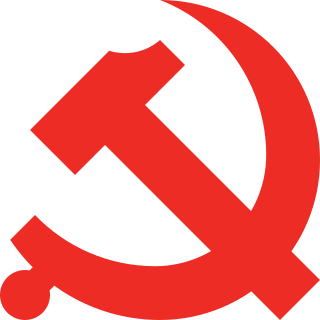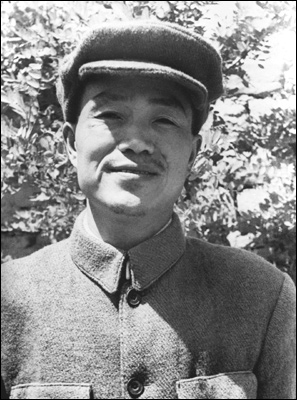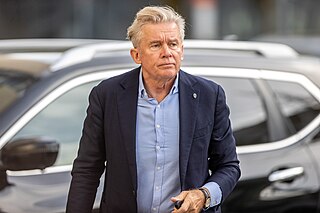You can help expand this article with text translated from the corresponding article in Chinese. Click [show] for important translation instructions.
|
This is a list of political campaigns of the Chinese Communist Party (CCP) since the founding of the party in 1921, in the aftermath of World War I.
| Year | Campaign | Native names (Simplified / Traditional, if applicable) | Descriptions | Number of deaths | Source |
|---|---|---|---|---|---|
| 1930–1931 | Anti-Bolshevik League incident | 打AB团 / 打AB團 | A political purge in Communist Party bases in Jiangxi province, during which Mao Zedong accused rivals of belonging to the Kuomintang intelligence agency "Anti-Bolshevik League." The campaign resulted in the trial and execution of large numbers of Red Army officers and soldiers. | ||
| 1941–1945 | Yan'an Rectification Movement | 延安整风 / 延安整風 | An ideological rectification campaign that took place at the Communist Party base in Yan'an, following completion of the Long March. Through the campaign, Mao consolidated his role as the Communist Party's paramount leader, and established Marxist–Leninism and Mao Zedong Thought as the Party's guiding ideologies. The campaign was notable for its role in unifying and strengthening the Communist Party, as well as for the methods of Soviet-inspired thought reform it helped standardize, including the use of self-criticism and "struggle." | [1] [2] | |
| 1947–1952 | Land reform | 土地改革 | The first of many Land reform campaigns, it saw the land in rural China forcibly taken from landlords and redistributed among peasants. The campaign was notable in that, unlike under Soviet practice wherein the security apparatus redistributed land and punished landlords, the people themselves were encouraged to overthrow and kill landlords. | ||
| 1950–1953 | Campaign to Suppress Counterrevolutionaries | 镇反 / 鎮反 | The first political campaign launched after the founding of the People's Republic of China, the Campaign to Suppress Counterrevolutionaries aimed to consolidate Communist Party authority and suppress residual opposition, including former Kuomintang supporters and functionaries, businessmen, and intellectuals. Those accused of being counterrevolutionaries were denounced in mass trials; many were sentenced to forced labor or condemned to be executed. Between 700,000 and 2 million are estimated to have been killed in the campaign. | 700,000 to 2 million | [3] [4] |
| 1950–1955 | New Marriage Law | 新婚姻法 | A marriage law mandating that marriages be registered through state institutions, and raising the marriageable age to 20 for males and 18 for females. | ||
| 1950–1956 | Combat Illiteracy Campaign | Focus on raising literacy rates from 15-25% in 1950. | [5] [6] [7] | ||
| 1951–1952 | Three-Anti/Five-Anti campaigns | 三反五反 | The Three-Anti (1951) and Five-Anti campaigns (1952) were urban reform movements targeting capitalists and business owners. They ostensibly aimed to root out corruption, embezzlement, waste, though they also served to purge opposition to the new Communist government. | [8] | |
| 1951–1953 | Withdraw from the sects movements | 退道运动 / 退道運動 | A campaign to denounce and suppress secret societies and religious organizations that were viewed as a potential threat to the CCP's authority | [9] | |
| 1953 | New Three-Anti Campaign | 新三反 | |||
| 1955 | Sufan movement | 肃反 / 肅反 | A political purge of "hidden counterrevolutionaries," including intellectuals, particularly within the military and political establishment. The People's Daily announced that 10 percent of Communist Party members were secretly traitors. Estimates vary on the number of individuals affected. On the conservative end, one source says 81,000 individuals were arrested, while another says 770,000 were killed in the campaign. | 770,000 | [10] |
| 1956–1957 | Hundred Flowers Campaign | 百花运动 / 百花運動 | The Hundred Flowers Campaign was a brief period in which intellectuals and others were encouraged to offer diverse views and criticisms on matters of national policy under the slogan "letting a hundred flowers blossom and a hundred schools of thought contend." When the criticism began targeting Mao Zedong and Communist rule, the movement was suppressed, and many of its participants were punished. The ideological crackdown following the campaign's failure re-imposed Maoist orthodoxy in public expression, and catalyzed the Anti-Rightist Movement. | ||
| 1956 | Public-Private Partnership | 公私合营 | The "State Council" Provisions on Several Major Issues in Estimating Property Clearance When Private Enterprises Implement Public-Private Partnerships, which involves machinery, houses, mineral deposits, finished products, raw materials, provident funds, etc. Non-physical objects were not mentioned at all. | ||
| 1957 | Party Rectification | [8] | |||
| 1957–1959 | Anti-Rightist Movement | 反右运动 / 反右運動 | The Anti-Rightist movement emerged in response to the Hundred Flowers Campaign, and constituted an effort to identify and purge alleged "rightists" and critics of Communist Party policies. The movement occurred in two waves, from 1957–1959, and saw the political persecution of an estimated 400,000 - 700,000 people. Intellectuals were a particular target of the campaign, and an estimated 10 percent of intellectuals, engineers and technicians were labeled rightists in the campaign. Those afflicted with the label were subject to social exclusion, criticism and repentance sessions, or were sent to prisons or camps as punishment. | [8] [11] | |
| 1958–1960 | Great Leap Forward | 大跃进 / 大躍進 | The Great Leap Forward was campaign initiated by Mao Zedong whose aim was to rapidly transform China into a modern communist society through the process of agriculturalization, industrialization, and collectivization of land. Private farming was prohibited, and those engaged in it were labeled as counter revolutionaries and persecuted. Although intended to increase China's economic output, the Great Leap Forward was instead a period of economic regression. The policies enacted during the campaign, coupled with the use of coercion and violence, resulted in the Great Chinese Famine and led to the deaths of 36 - 45 million. | 36 to 45 million | [12] |
| 1958–1962 | Four Pests Campaign | 消灭麻雀运动(灭四害) / 消滅麻雀運動 | A mass mobilization effort to eradicate rats, flies, mosquitoes, and sparrows. The extermination of the last upset the ecological balance, and enabled the proliferation of locust, resulting in severe crop damage. | [13] | |
| 1961 | Reeducation of Party Members | [8] | |||
| 1963–1966 | Socialist Education Movement | 社会主义教育运动 / 社會主義教育運動 | Also called the "four clean-ups" campaign, the Socialist Education Movement sought to cleanse the bureaucracy of "reactionary" elements, particularly in political, economic, organizational and ideological fields. Part of the campaign involved sending members of the government and intellectuals to the countryside to learn from peasants. | [14] | |
| 1963 | Learn from Comrade Lei Feng | 向雷锋同志学习 / 向雷鋒同志學習 | A propaganda campaign encouraging imitation of Lei Feng, a young People's Liberation Army Soldier who died at age 22. Lei Feng was held up as an example of communist ideals, including a strong work ethic, self-sacrificing nature, and unquestioning dedication to Mao Zedong and the socialist cause. | [15] | |
| 1964 | Party Rectification | [8] | |||
| 1966–1976 | Great Proletarian Cultural Revolution | 无产阶级文化大革命 (or 文化大革命/文革) | The Great Proletarian Cultural Revolution, commonly known as the Cultural Revolution, was a social-political movement that took place in the People's Republic of China from 1966 through 1976. Set into motion by Mao Zedong, its stated goal was to enforce communism in the country by removing capitalist, traditional and cultural elements from Chinese society, and to impose Maoist orthodoxy within the Party. The revolution marked the return of Mao Zedong to a position of power after the failed Great Leap Forward. The movement paralyzed China politically and significantly affected the country economically and socially. | 500,000 to 2 million | |
| 1966 | Destruction of Four Olds | 破四旧 / 破四舊 | The Destruction of the Four Olds was among the first major initiatives of the Cultural Revolution. Mao Zedong called for the "Four Olds"—Old Customs, Old Culture, Old Habits, and Old Ideas— to be destroyed. The task fell largely on Red Guards, who heeded Mao's call to burn and destroy cultural artifacts, Chinese literature, paintings, and religious symbols and temples. People in possession of these goods were punished. Intellectuals were targeted as personifications of the Four Olds, resulting in their persecution. | ||
| 1967 | Cleansing the Class Ranks | 清理阶级队伍 | |||
| 1969 | Party Rectification | [8] | |||
| 1968–1978 | Down to the Countryside Movement | 上山下乡,接受贫下中农再教育 / 上山下鄉,接受貧下中農再教育 | Partly in an effort to curb the chaos of the Cultural Revolution and dissolve the Red Guards, Mao initiated a campaign to send urban youth to remote rural areas to "learn from the peasants." The campaign, which spanned from the late 1960s well into the 1970s, produced a "lost generation" in China, as the "sent-down youth" were denied the opportunity to pursue advanced education. | ||
| 1970–1972 | One Strike-Three Anti | 一打三反 | A campaign to crack down on "counterrevolutionaries" under the pretext of combatting the "three-antis" of graft and embezzlement, profiteering, and extravagance and waste. Official estimates state that in the first ten months of the campaign, 280,000 'counterrevolutionaries' were arrested. | [16] | |
| 1973–1975 | Criticize Lin, Criticize Confucius | 批林批孔运动 / 批林批孔運動 | A campaign launched in 1973 that linked previous attacks against the late Lin Biao to criticisms of Confucianism. The campaign involved allegorical references wherein Mao and the Gang of Four were represented Qin Shihuangdi and the Legalist tradition, and Zhou Enlai was taken to represent the reactionary forces of Confucianism. The campaign served to indirectly criticize Zhou Enlai, while giving support to the Gang of Four. | ||
| 1975–1977 | Counterattack the Right-Deviationist Reversal-of-Verdicts Trend | 反击右倾翻案风 / 反击右傾翻案風 | Gang of four used it to attack Deng Xiaoping | ||
| 1976 | Campaign to denounce the Gang of Four | In the immediate aftermath of Mao Zedong's death, the "Gang of Four" — composed of Jiang Qing, Zhang Chunqiao, Yao Wenyuan, and Wang Hongwen—were denounced as counterrevolutionaries. As all four had held prominent positions in Mao's government, they were blamed for the worst excesses of the Cultural Revolution, and prosecuted in 1981. | |||
| 1982 | Anti-Corruption, Anti-Economic Crimes | [8] | |||
| 1983–1984 | Anti-Spiritual Pollution Campaign | 清除精神污染 / 清除精神污染 | The anti-spiritual pollution campaign was propelled by conservative factions of the Chinese Communist Party, notably Deng Liqin, in the fall of 1983. The campaign was part of a backlash against growing intellectual discourse promoting humanism and civil rights and other manifestations of "bourgeois liberalism." | [8] [17] | |
| 1983–1987 | Party Rectification | [8] | |||
| 1986–1992 | Anti-Bourgeois Liberalization | [8] | |||
| 1989–2000 | Anti-Corruption Drive | [8] | |||
| 1991– | Patriotic Education Campaign | 爱国主义教育 / 愛國主義教育 | Initiated in 1991, but not carried out in full scale until 1994. The main goal of the campaign was to "boost the nation’s spirit, enhance cohesion, foster national self esteem and pride" | [18] | |
| 1996 | Grasping the large, letting go of the small | 抓大放小 | Economic campaign | ||
| 1998–2000 | "Three Stresses" party rectification | 三讲 | Launched by Jiang Zemin in late 1998, the "Three Stresses" campaign was an ideological rectification among Communist Party members that asked them to stress study, politics, and righteousness (jiang xuexi, jiang zhengzhi, jiang zhengqi). The campaign was part of an effort to reconcile market reforms with socialist philosophy. In the course of the campaign, some high-ranking Communist Party officials were prosecuted on corruption charges. | [19] | |
| 1999–present | Campaign against Falun Gong | 取缔法轮功 / 取締法輪功 | Campaign to eradicate the Falun Gong, a qigong-based spiritual practice believed to have had 70 million practitioners in 1999. The campaign involves the use of propaganda, extrajudicial imprisonment, and coercive "reeducation" of Falun Gong adherents. At least two thousand are believed to have been tortured to death, and hundreds of thousands imprisoned. | [20] [21] [22] | |
| 2005 | Campaign to Maintain the Advanced Nature of Communist Party Members | 保持共产党员先进性教育 / 保持共產黨員先進性教育 | Ideological rectification campaign designed to strengthen Party members' knowledge of Marxism, fight corruption, and guard against social contradictions that threaten the ruling status of the Communist Party. Following the campaign's official launch in January 2005, millions of Party members were made to attend education and self-criticism sessions. | [19] [23] | |
| 2006 | Eight Honors and Eight Shames | 八荣八耻 / 八榮八恥 | A moral code introduced by Hu Jintao intended to "measure the work, conduct, and attitude" of Communist Party members. | [24] | |
| 2009 | 6521 Project | A nationwide operation helmed by Xi Jinping and Zhou Yongkang to ensure “social stability” by suppressing potential dissidents during anniversaries of political significance. The campaign’s name refers to the 60th anniversary of the founding of the People’s Republic of China, the 50th anniversary of the 1959 Tibetan uprising, the 20th anniversary of the Tiananmen Square protests, and the 10th anniversary of the persecution of Falun Gong. | [25] [26] | ||
| 2012 | Anti-corruption campaign under Xi Jinping | A nationwide operation launched by Xi Jinping to stamp out corruption in the Chinese Communist Party. |












